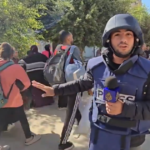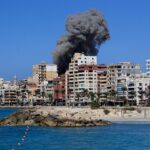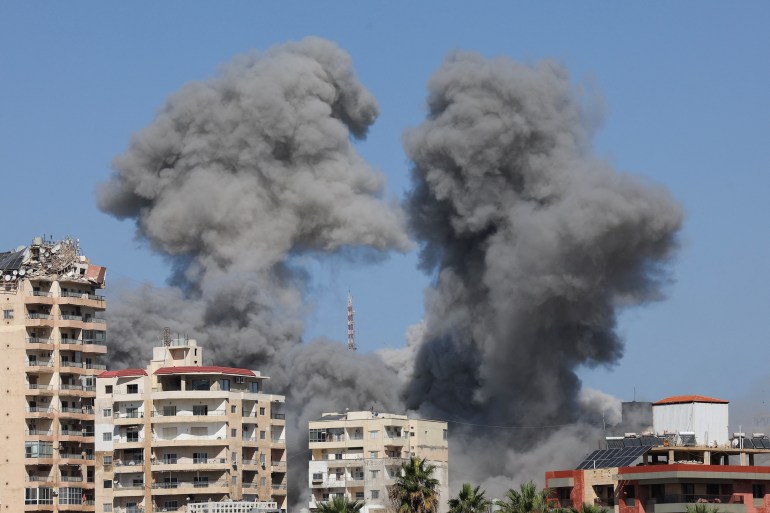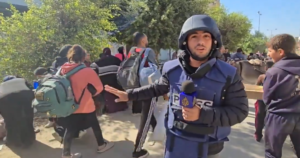Israeli warplanes have attacked multiple buildings in Lebanon’s southern coastal city of Tyre, sending up large clouds of black smoke, as the Lebanese armed group Hezbollah confirmed that a top official widely expected to be the group’s next leader had been killed in an Israeli strike.
There were no reports of casualties in Tyre, where the Israeli military had issued evacuation warnings ahead of the strikes. The Lebanese state-run National News Agency reported on Wednesday that an Israeli strike on the nearby town of Maarakeh had killed three people.
Meanwhile, Hezbollah fired a new barrage of rockets into Israel, including two that set off air raid sirens in Tel Aviv before being intercepted.
The group also confirmed the death of Hashem Safieddine, who had been widely expected to take over the leadership of Hezbollah following the killing of Hassan Nasrallah last month.
Israel said on Tuesday that it had killed Safieddine in a strike earlier this month in Beirut’s southern suburbs.
“We pledge to our great martyr and his martyred brothers to continue the path of resistance and jihad until achieving its goals of freedom and victory,” Hezbollah said in a statement.
Safieddine, a powerful cleric within the party ranks, was the head of Hezbollah’s highest political decision-making body, the executive council. He was widely expected to succeed Hassan Nasrallah, one of the group’s founders and longtime leader, who was killed in an Israeli airstrike last month.
Hezbollah began firing rockets towards Israel on October 8, 2023, after Israel launched its ongoing deadly assault on the besieged Gaza Strip in response to a Hamas-led attack on southern Israel.
The exchanges of fire continued on a near-daily basis for months, but Israel’s military drastically escalated the fighting last month, killing much of Hezbollah’s senior leadership and launching air raids across Lebanon. Earlier this month, it sent ground troops into areas in the south of the country.
Tyre, a provincial capital, had largely been spared in the war, but strikes in and around the city have intensified recently.
The 2,500-year-old city, about 80km (50 miles) south of Beirut, is known for its pristine beaches, ancient harbour, Roman ruins and hippodrome, a UNESCO World Heritage Site. It is among Lebanon’s largest cities and a vibrant metropolis popular with tourists.
The buildings struck on Wednesday were between several heritage sites, including the hippodrome and a cluster of seaside sites associated with the ancient Phoenicians and the Crusaders.
The Israeli military told residents to move north of the Awali River, dozens of kilometres to the north, claiming there were Hezbollah assets in the evacuation warning area without elaborating or providing evidence.
‘You can’t bomb your way to safety’
Israel’s attack on Tyre is reminiscent of its attacks on Gaza, Mohamad Bazzi, an Associate Professor from New York University, said.
“We’ve seen Israel use the same playbook in Gaza, these two strategies of massive bombardment, displacing civilians and the so-called evacuation orders. Lebanon is a sovereign country, and Israel has no basis for issuing evacuation orders in a foreign, sovereign country,” Bazzi told Al Jazeera.
“In the long-term, I’d argue it’s a failed strategy because you can’t bomb your way to safety and peace on the Israel-Lebanon border. You have to have a diplomatic settlement, and Israel’s leadership has shown no interest in this so far.”
First responders from Lebanon’s Civil Defense used loudspeakers to warn residents to evacuate the area and help older adults and others who had difficulty leaving. Ali Safieddine, the head of the Civil Defense, told The Associated Press (AP) news agency there were no casualties.

Wissam Ghazal, a health official in Tyre, said the strikes hit six buildings, flattening four approximately two hours after evacuation warnings were issued. People displaced by the strikes could be seen in parks and sitting on the sides of nearby roads.
The head of Tyre’s disaster management unit, Mortada Mhanna, told AP that although many people had fled the city, thousands of residents and displaced individuals from other areas have chosen to stay.
Many people, including hundreds of families, previously fled villages in south Lebanon to seek refuge in Tyre.
An estimated 15,000 people remain in the city out of a pre-war population of about 100,000, Mhanna said.
“It’s very difficult for many to leave. They’re worried about being subjected to further chaos and displacement,” he said, adding that he and his team had chosen to stay in the city, but “it’s a big risk. It’s not safe here anymore.”
More than 2,500 people have been killed in Israeli attacks on Lebanon since October last year, according to the Lebanese Health Ministry, and more than a million people have fled their homes since September.









More Stories
Grand Teton grizzly bear that delighted visitors for decades is killed by vehicle in Wyoming
Muerte en el condado Mesa está relacionado con el brote de E. coli vinculado a las Quarter Pounders de McDonald’s
Mesa County death connected to E. coli outbreak linked to McDonald’s Quarter Pounders